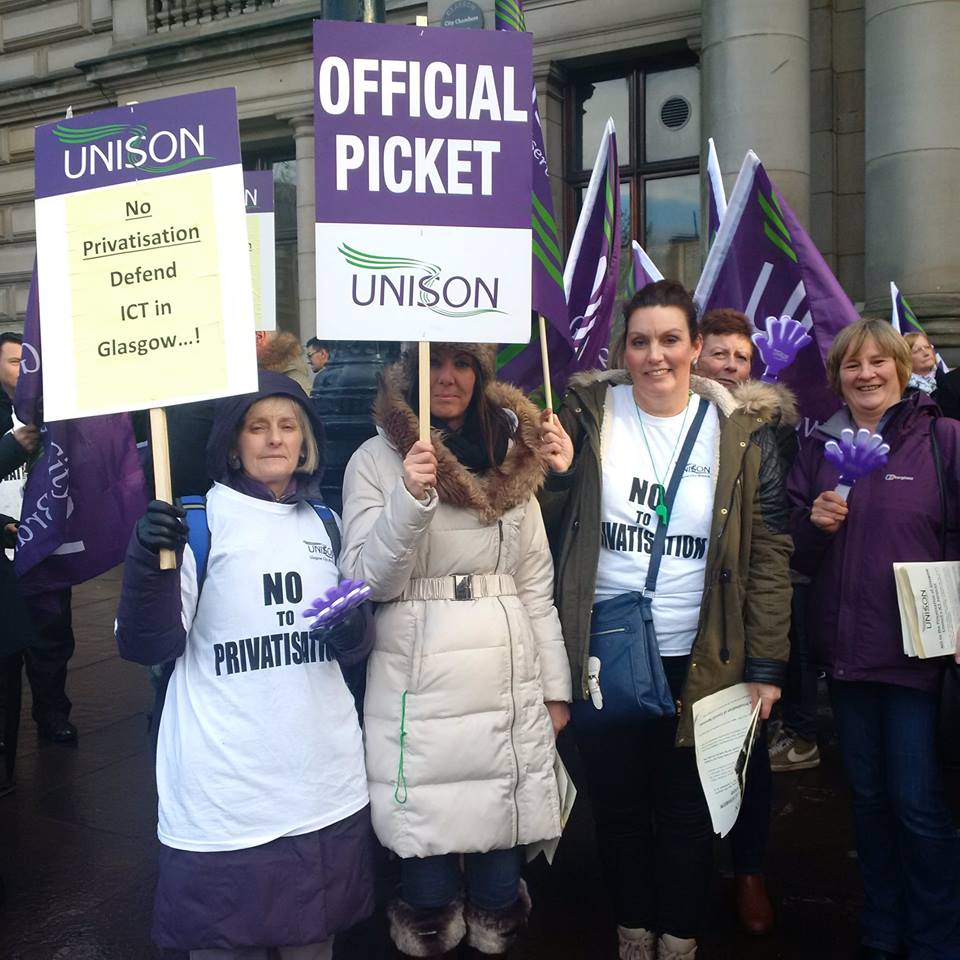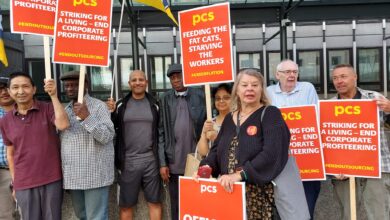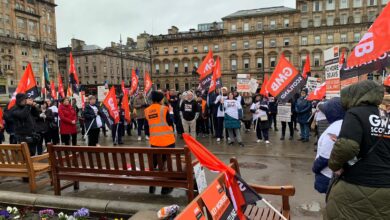Setback in Scottish local government pay battle

Jim McFarlane, Dundee City Unison secretary - personal capacity
A majority of UNISON members in Scottish Local Government have voted to reject the employer’s pay offer of a £350 flat rate or 1% for those earning over £35,000 a year. The postal ballot resulted in members voting 62.7% in favour of taking industrial action. Unfortunately, the turnout in the ballot was just 22.8%. Earlier this year Unite and the GMB voted in favour of accepting the pay offer.
This was the first national Unison ballot since the Tory Trade Union Act was introduced. An act that seeks to restrict the trade union’s ability to take action by requiring at least a 50% turn out in a postal ballot. At a meeting of the Scottish Unison Local Government Committee last week, an elected lay-member body, a decision was taken not to proceed to strike action.
It seems that a key factor in this decision was the fact that the turnout was, by historic standards, very low. At a recent meeting in March 2017 of Scottish local government branch secretaries and representatives of the Local Government Committee there was a mood in favour of defying the 50% threshold and calling action if there was a a big majority in the ballot and a reasonable turnout. Socialist Party Scotland members who are UNISON branch secretaries argued strongly in favour of this position.
The consultative ballot on the pay offer held earlier in 2017, which included online voting, resulted in a near 78% rejection on a turnout of around 28%. The fact that the official strike ballot, which does not even allow trade unions to use secure, modern methods like online voting, saw significantly fewer members voting in favour of strike action and on a lower turnout weighed heavily in the deliberations of many UNISON activists.
weighing up
A serious weighing up of how and when to go ahead with strike action in defiance of the new laws is a key one for socialists and the left in UNISON. A decisive factor is a tactical assessment that calling action will lead to the mobilisation of a critical mass of members in the face of possible threats of legal action and also a confidence that the employers can be taken on and pushed back over pay.
On the one hand it is clear that a substantial number of members are not accepting of the pay offer. 9,540 members voted in favour of strike action with 5,662 opposed. However, 66,000 were balloted in all and more than 75% of members did not take part. The fact that almost 40% of those who did respond voted No to strike action was also a factor when considering whether to proceed with action. A 70% vote for strike action on a 30% plus turnout would, for example, have been a stronger base for calling at least the 1st day of national strike action later in June.
The smaller vote for strike action in the ballot compared to the numbers who rejected the pay offer in the consultation may well have been affected by the decision of Unite and GMB to accept the offer. This also meant that any industrial action would have been limited to only one of the main three local government unions. Although UNISON is the largest union in Scottish local councils by some margin, both the GMB and Unite do organise key sectors, including cleansing workers and others.
The ballot period was probably too short. For a Scotland-wide ballot of this size involving 66,000 workers at least 26 days should be used (which was the original plan) rather than 19 days. In addition, some members don’t think the union is serious about executing an effective industrial campaign on pay due to previous experiences e.g. past actions called-off or one day strikes called-off for very little gain.
The local council elections in early May then the unexpected decision to call a General Election may also have cut across attempts to build the profile of the pay campaign and ballot. But that was also an opportunity to put all the candidates under pressure to declare where they stood on breaking the 1% pay barrier. Some branches did this very well and again good practice could have been replicated in other areas with the right support and lead.
Legal action
It is, on balance, unlikely that, faced with a one-day strike, COSLA (the employers) would have sought any legal action in the first instance. Both the SNP and Labour say they would not implement the anti-union law over thresholds. One option could have been to call a strike as planned in late June to test the mood and seek to apply political pressure. Even then, it would be important to have a big majority of Unison members mobilised to take this action in the face of a campaign by sections of the media and possible threats of legal action.
There were some positives from the pay campaign. Not only did 10,000 members vote to strike, the decision to set a deadline of February for the employers to make an offer helped focus the minds of the Employer’s organisation CoSLA as well as local branches that UNISON was not going to allow negotiations to drag on well into the summer, this should become the norm.
The online exercise carried out in the consultative ballot helped to update members home address, mobile phone numbers and email addresses resulting in nearly 50% of members now being on an electronic database. This should be built on.
Branches should be resourced to try and increase this much further. UNISON needs to invest in modern methods of communication and interaction with members at a national and local level. Branches should get the proper training and resources to utilise these methods.
It is clear that turnout in both ballots varied across branches. Some branches need more support to organise workplace meetings, newsletters etc in the run up to any ballot. Too often local activists are already dealing with heavy caseloads and struggle to free up time at short notice to campaign for members to vote in postal ballots.
Both the SNP and Scottish Labour claim they are opposed to continuing pay restraint across the public sector. They need to be reminded of that at every opportunity. The new political leadership of COSLA should be approached as soon as possible by UNISON to make clear that we have had enough of declining living standards along with massive cuts in local government and they should prioritise pay. They should also be reminded that both Labour and the SNP claim that they would not use the Tory anti union laws unless legally forced to. Both parties also say they now oppose pay caps on public sector workers.
Trade union activists must look to build on the mood of those who are prepared to take industrial action and to spread that across the whole union. We need to recruit and train new layers of stewards, particularly amongst young people and women workers.
The examples in the college sector of workers taking action and winning along with the number of local strikes fought and won in branches like Glasgow should be used to raise confidence of members that action can bring a pay deal we all deserve.



